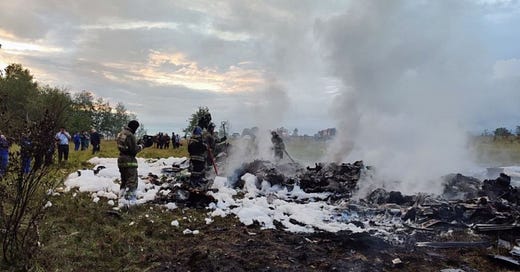WHY PUTIN KILLED PRIGOZHIN
Russia ducks direct confrontation with NATO as it tightens its hold on eastern Ukraine

Over the past two late summer weeks we’ve looked back at past American military disasters, so time now to bring you up to date on the continuing madness in Ukraine.
Let’s start with the fallout from the death last month of Yevgeny Prigozhin, the leader of the Wagner Group. The mercenary made a fortune renting out his forces as guns for hire, largely in Central Africa, and the group took enormous losses in brutal and successful house-to-house combat earlier this year in the city of Bakhmut against an equally courageous Ukraine army. Russian President Vladimir Putin acknowledged in late June that the Kremlin had paid Prigozhin’s army, many recruited from the country’s prisons, nearly $1 billion dollars between May of 2022 and May of 2023. I have reported in previous columns that the rebellion Prigozhin launched in June was far from the threat to Putin's standing that the Western media consistently reported it to be. It was instead a historically Russian way of sidelining an often troublesome mercenary leader.
Prigozhin and his reduced Wagner force were left in limbo after the aborted revolt, and many Wagner members were absorbed into the Russian military. Putin arranged for Prigozhin and what was left of his mercenary force to be driven into exile in Belarus.
But Prigozhin did not stop there. By early August there were reports of border tensions as the remnant of the Wagner Group made a series of intrusions into the airspace of Poland, and troublesome threats at the borders of Lithuania, Latvia, Estonia, and Finland. For Putin, triggering complaints from NATO countries was an unforgivable breach. “That was it,” a knowledgeable US intelligence official told me.
Keep reading with a 7-day free trial
Subscribe to Seymour Hersh to keep reading this post and get 7 days of free access to the full post archives.



